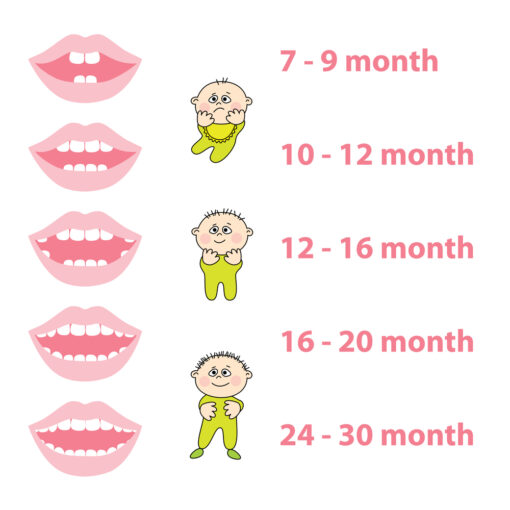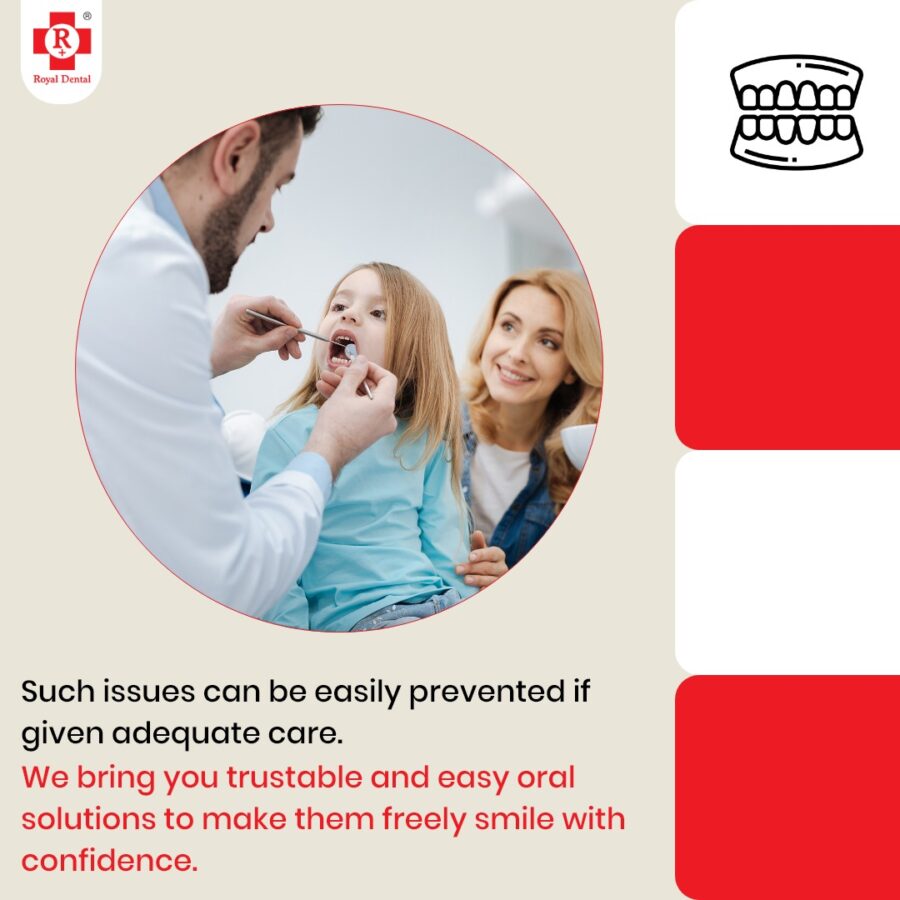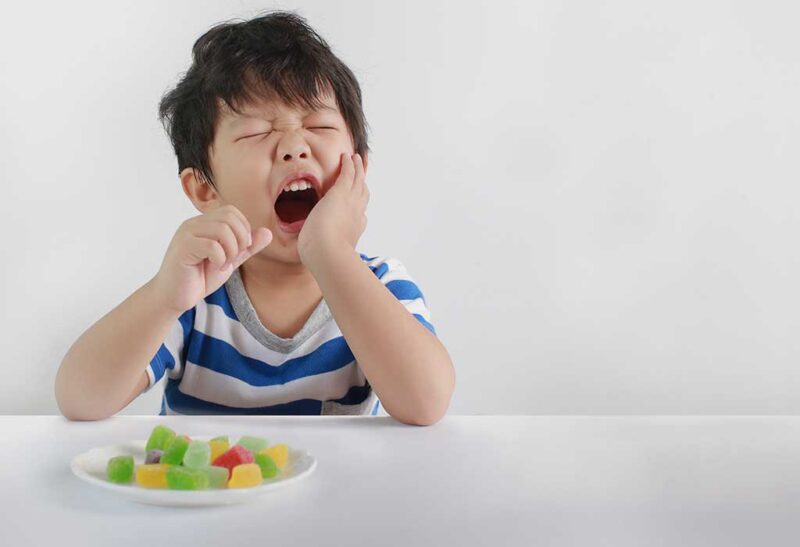There is a misconception amongst parents that dental treatment of milk teeth is not necessary. Milk teeth play a major role in child’s oral health. Maintaining oral hygiene of milk teeth is of utmost importance for child’s physical, emotional and social development. As if not taken care, these may lead to dental issues in children.
There are 20 primary teeth in a childs dentition. The first milk teeth to erupt are mandibular and maxillary incisors. They erupt around 6-7 months of the child. All these 20 teeth erupt by 3 years of childs age.

Common Dental Issues in childhood:
Nursing bottle caries: Decay develops in child’s milk teeth when child is fed with sweetened liquids or sugars like milk, fruit juice for a long period of time. Bacteria in the mouth utilize the sugars and make acids that attack the teeth. Feeding child at nap time is harmful because the flow of saliva is reduced. Nursing bottle caries usually affect upper front teeth but can also affect other teeth as well leading to rampant caries.
When their teeth come in, it is important to brush them gently with a toothbrush and a grain of rice-sized amount of fluoride toothpaste. Use only formula, breast milk, or milk in your baby’s bottle, and avoid liquids like sugary juices or soft drinks.
Rampant caries: If not treated at an early age will lead to pain, infection, tongue thrusting, abnormal swallowing habits, speech difficulties.
The good news is that tooth decay can be prevented. Proper brushing techniques and regular visits to a dentist will significantly reduce the chance of a child developing tooth decay.
Bad Breath: Also known as foul smell; bad breath may affect anyone, regardless of their age. Dental issues like ad breath are due to the foods we eat. However, chronic bad breath in children could indicate a deeper root issue than eating stinky foods.

Proper dental hygiene is the best way to treat and prevent bad breath. An antibacterial mouthwash may help reduce any smells, and brushing the tongue could help fight bacteria in the mouth.
Teeth Sensitivity: Another common childhood dental problem is sensitive teeth. Hot or cold foods and fluids may cause irritation and discomfort in children.
Common Dental Issues in childhood (cont.):
To overcome sensitive teeth, dentists may apply sealant to the teeth, strengthening the enamel and filling in any cracks. Give your child a soft-bristled toothbrush to use at home — hard bristles can damage the surface of teeth over time, scraping off enamel.
Gum Diseases: Gum disease or gingivitis is the inflammation of the gum tissue. It’s often caused by lack of oral and dental hygiene. Plaque buildup can progress into bone damage and tooth loss too.
Gum disease is preventable, and it can be avoided with simple steps such as: brushing, flossing and dental visits. For serious cases, a child may need to visit a dentist for special rinses and deep cleaning.
Thumb Sucking: One of the most common dental issues associated with childhood is thumb-sucking. For some children, this habit begins in the womb. The action is Comforting and instinctive; this a cause for worry in most cases and will fade away with time.
If caries involve the pulp the treatment options are:
Pulpotomy: The pulp therapy treatment done when the decay has reached the pulp. Further, the pulp is partially intact and partially damaged. Your dentist here exercises its discretion as to whether he should completely remove both your damaged pulp and the intact pulp or remove only the damaged pulp alone.
Pulpectomy: This pulp therapy treatment done when the decay or damage has reached the pulp. Further, the pulp is partially or completely damaged. Your dentist here removes the entire damaged pulp from the pulp chamber as well as the roots. The roots then filled (usually with Gutta Percha) immediately or after few dressings of cotton embedded in medicine. The treatment completed Pulpectomy or Root Canal therapy.
In cases of severe trauma and if the tooth unable to save and needs extraction the space has maintained by giving space maintainer appliance. Also in cases of over retained deciduous teeth careful evaluation is a must in order to avoid further complications like impaction of permanent teeth, development of cyst, crowding, malocclusion. When the deciduous teeth shed off and new permanent teeth erupt and when there is decay in such teeth reaching the pulp or trauma two treatment options recommended for performing root canal.
Treatment protocols depend upon the stage of formation of the root:
Apexogenesis: It is performed on incompletely formed roots. The goal is to preserve the vital tissue so that continued root development with apical closure can occur.
Apexifixation: It is a method to induce development of root apex of an immature pulpless tooth by formation of osteocementum or bone like tissue. Its objective is to induce closure of apical one third of the canal or apical calcific barrier against which an obturation can be done.

Trauma in childhood is most common. Trauma to the tooth structure is an accidental phenomenon where a major harm can be caused on the tooth as well as surrounding underlying soft tissues. The soft tissue trauma along with pain of the tooth is catered prior to the traumatic tooth structure. Once the symptomatic relief to the soft tissue and pain is achieved the traumatic tooth is then treated depending upon the range and extent of fracture or trauma caused.







Milk teeth play a major role in child’s oral health. Maintaining oral hygiene of milk teeth is of utmost importance for child’s physical, emotional and social development. Nice blog.